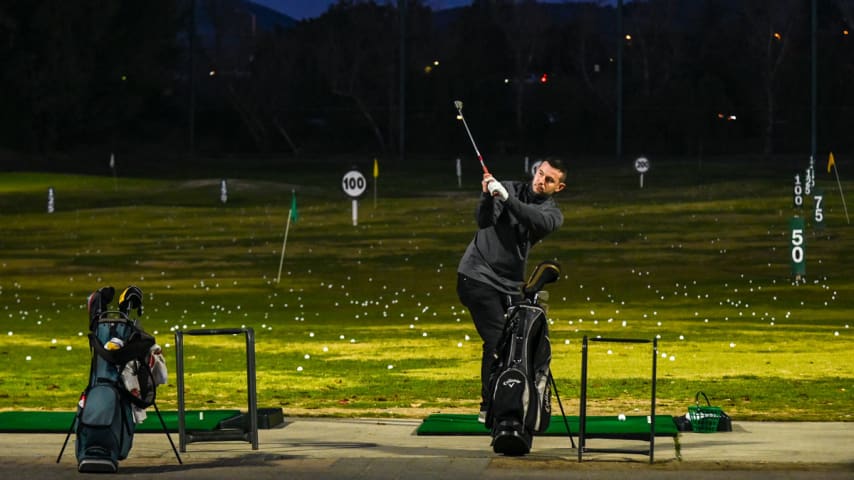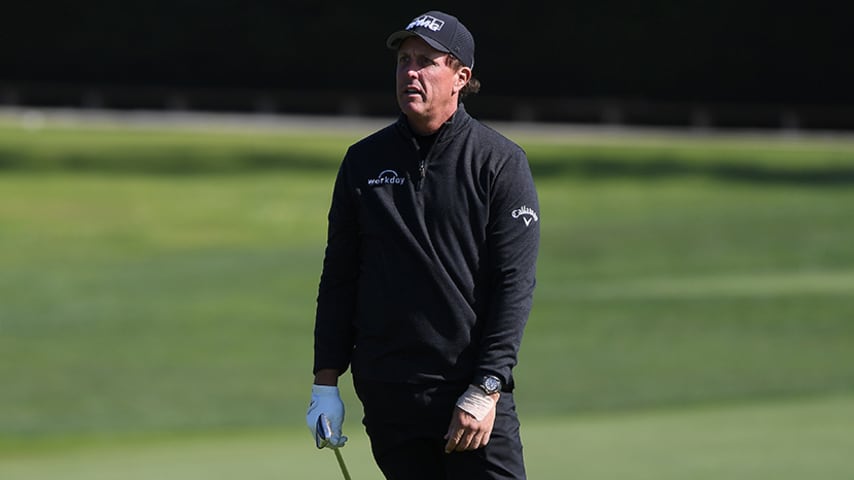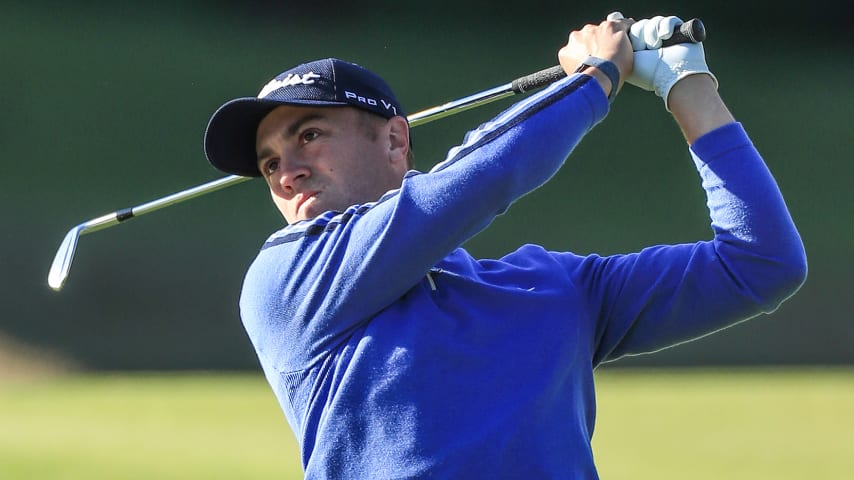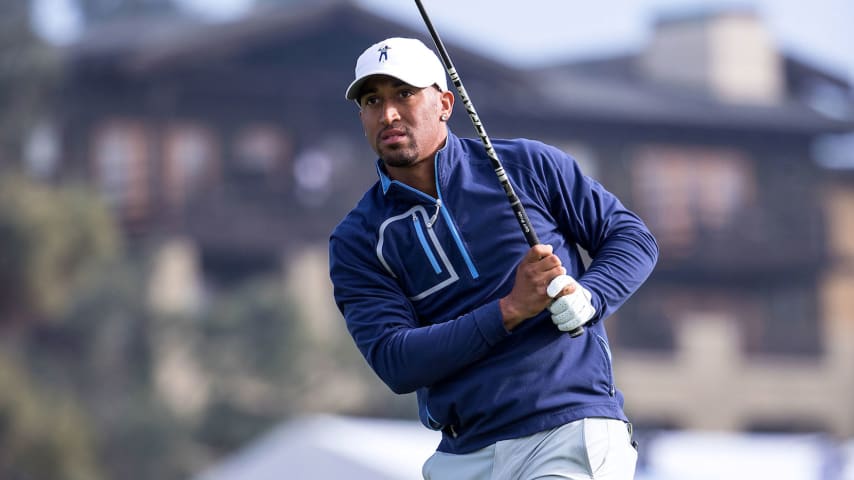Home on the range: How tiny Westlake Golf Course has had a big impact on the game
12 Min Read

A first-person account of the big impact that tiny Westlake Golf Course has had on the game
Written by Sean Martin
A first-person account of the big impact that tiny Westlake Golf Course has had on the game
Editor's note: Matthew Wolff, the 54-hole leader of the U.S. Open, grew up at Westlake Golf Course. He'll play in Sunday's final group with Bryson DeChambeau. The coaches for Wolff and DeChambeau, George Gankas and Chris Como, both cut their teeth as teachers at Westlake and became friends there. This story from February explains why this humble course has had such a big impact on the game.
WESTLAKE VILLAGE, Calif. – Westlake Golf Course is just shy of 5,000 yards long. Many would say it’s missing something, namely 2,000 yards. It’s the sort of place that’s easy to overlook.
For those who grew up there, it’s hard to forget.
When Danielle Kang, the LPGA major winner, was struggling with her swing, she flew home from Las Vegas and returned to Westlake’s driving range to find her game. She calls it “a magical place” and her “sanctuary." Chris Como made a pilgrimage to Westlake for the first season of his Golf Channel show, “Swing Expedition." The show usually visits the game’s top instructors and fanciest academies, but this episode paid homage to the place where Como worked in the cart barn and gave his first lessons.
I returned recently, as well, to tell the story of the course where I was introduced to the game. You may have caught glimpses of Westlake on Como’s show or in the pages of Golf Digest or on the Instagram feed of swing instructor George Gankas. The success of Gankas and his star student, Matthew Wolff, has brought attention to this tiny public course in Southern California.
There are other affordable and accessible courses in the country, but Westlake provides a unique case study. What it lacks in length, it makes up for with a communal atmosphere that nurtures players’, especially juniors’, passion for the game.
Westlake is a small course with a large footprint. Yard for yard, I don’t think another course has had a larger impact on today’s game. It may seem an audacious claim, but consider the evidence. Two of the game’s most influential instructors and several successful pros have called it home.
Como hosts two shows on Golf Channel and has coached or consulted with Tiger Woods, Bryson DeChambeau, Trevor Immelman and Jamie Lovemark.
Gankas runs his successful teaching business out of Westlake’s driving range, with its artificial-turf mats and striped range balls. Wolff was a constant presence there during his junior-golf days. “They definitely have a lot of my money,” he said recently. Last year, he joined Woods and Ben Crenshaw as the only players to win the NCAA individual championship and a PGA TOUR title in the same year. This week, he’s competing 30 miles away in the Genesis Invitational at Riviera Country Club.
Another PGA TOUR player, Brandon Hagy, is a product of the course’s popular junior program. And Kang, a two-time U.S. Women’s Amateur champ, holds the course record.
Her 10-under 57 (yes, the par is 67) bettered the mark set by Dave Stockton, the course's first touring professional. Stockton won two PGA Championships. Kang won the Women's PGA Championship. If nothing else, Westlake punches well above its weight.
Its impact extends far beyond the names we see on TV. It changed my life. I never would’ve swung a club -- or devoted my entire career to covering golf – if not for its affordable junior program. My parents don’t play golf. After moving from Connecticut to California in sixth grade, I followed my new friends to the course. That’s where I made my first swings and held my first job. I was there almost every day until leaving for college. And I know I’m not the only one.
I’m not too naive to deny the impact of outside factors. Westlake Village, and the surrounding area, is affluent enough to make golf a recreational option. Southern California’s sunny weather, and its strong golf culture, definitely help.
Padraig Harrington, the three-time major winner, has been to Westlake to work with Gankas. He identifies the swing coach as someone who is equally consumed with the game. Westlake is full of those type of people, many of whom have been there for decades.
“If you pulled into a gas station, … you’d likely find him giving someone a lesson as they’re waiting,” Harrington says. “They just think golf. … There’s a real good atmosphere around his people. Everyone is competing and learning from each other and seeing what’s possible.”
Wolff says he benefitted from constant competition with Sean Crocker, who now plays the European Tour, and Spencer Soosman, a senior at the University of Texas. It’s common to find groups of kids wiling away hours at Westlake. In fact, it’s welcome.
Westlake’s small stature has unforeseen benefits. It gives kids the opportunity to spend unsupervised hours walking the course. “Walking develops a connection to the game,” says Chris Vatcher, Westlake's general manager of more than three decades. “It creates independence for juniors, and adventure.”
The par 4s at Westlake are short enough that reaching them in regulation feels tantalizingly realistic for the beginner. There’s pressure for better players to make birdies. Nick Geyer is five years younger than me, but he was one of our frequent playing partners growing up. He was hitting 8-irons into the par 4s when we had pitch shots. But he could hold his own.
“I could play with players I aspired to be,” recalls Geyer. Westlake is a large reason the local high schools have strong golf programs. Three members of my team played Division I golf.
Geyer went on to play at New Mexico and was a quarterfinalist in last year’s U.S. Mid-Amateur. He now works for Scotty Cameron, the putter maker. Geyer reminds me that the course’s location adjacent to the 101 Freeway also makes it a convenient place to indulge the crazy cravings this game can produce.
The course opened in the late 1960s, a recreational amenity for a new master-planned community about 40 minutes northwest of Los Angeles. All 18 holes were lit by floodlights. It claimed to be the longest night-lit course in the country, though I can’t confirm that.
The lights came down when the 101 was expanded and an energy crisis hit in the early 1970s. They were distracting to motorists and too expensive to run. But there are still remnants from that unique start. The eighth, ninth and 18th greens are still illuminated at night, as are the putting green and driving range. Those lights draw golf diehards like moths to a flame.
“It was the only place you could feed the beast past sundown,” says Chris Zambri, the longtime head coach of the USC men’s team. He’s been coming to Westlake since he was a kid.
Westlake stays open until 10 p.m. in the summer. Many nights, at least one customer is hitting balls until the lights are turned off, much to the dismay of the employees waiting to stack the final mats and store them for safe-keeping.
Hagy was one of those people.
“All through junior golf or high school, I’d be out there until they shut the lights off,” he says. Kang wouldn’t leave until she’d hit the ‘5’ in the circular 150-yard marker and the ‘0’ in the middle of the 100-yard sign. She’s a long hitter for her size because she strived so hard to hit the net that sits about 280 yards away.
“The balls were always good,” Zambri remembers. “If they got imperfect, they’d pick them out and throw them away. The mats never got old. You weren’t hitting off mats with holes in them. And they weren’t closing the place down for anything. Even when it was raining, they’d leave four mats out there for people to hit off of. You could count on the place.”
Zambri worked at Westlake while on the mini-tours and still hit balls there during his six seasons on the Buy.com (now Korn Ferry) Tour.
He was a prototypical grinder, emblematic of the ilk attracted to Westlake. He was a short hitter, even during those nascent days of titanium clubs, who was buoyed by a stellar short game. He was never afraid to tinker with his swing. He hung a carpet in his garage so he could hit balls at all hours. I still remember the day he arrived at the range and said he was experimenting with swinging flat-footed. He wondered if the rising of the right heel through impact was leading to an inconsistent angle of attack and hurting his distance control.
Zambri had one of those careers that was so painstakingly close to being something more. He finished 19th on the Buy.com money list in 1998, missing his TOUR card by just a few spots. Three years earlier, he was 11th after shooting 70 in the first round of the U.S. Open at Shinnecock Hills. A day later, he missed the cut by five strokes. (Westlake also is where he passed the game on to his sons, Wyatt and Joey. Joey qualified for last year’s U.S. Amateur and will play for his father in the fall.)
There were closest-to-the-pin contests and an open-source exchange of swing theories. It was a perfect place for Como, a first-generation golfer who came to the game in high school, to start down his road to teaching success.
“It was very social, people were just hanging out,” Como says. “… It gave me a community to work on my game, to talk golf swing.”
He and Gankas became friends at Westlake, bonding over their love of the golf swing. Como eventually moved around the country to work with the game's top instructors, passing some of his discoveries on to his friend as they each honed their craft. Como is now the director of instruction at Dallas National and teaches in Manhattan.
Gankas has been teaching at Westlake since 2006. He's had plenty of offers to take his thriving business elsewhere, but he stays because Westlake gives him the flexibility to express his unique style. No one cares if he shows up in a T-shirt or flip-flops.
Many of Westlake’s instructors have been there there for decades. Vatcher’s wife, Chrissie Lehmann Vatcher, played on the LPGA before becoming an instructor at Westlake. Her brother, Ted, once beat Corey Pavin for the league title in high school before playing for the powerhouse BYU team led by Bobby Clampett. Lehmann spent a year on the PGA TOUR before coming to Westlake. I took lessons from Ron Hinds after seeing his name in Tim Rosaforte’s biography of Tiger Woods. Hinds, who passed away a few years ago, played a Monday qualifier with a teen-aged Woods. “That kid humbled all of us,” Hinds said afterwards.
Those were some of the first people to teach Como about the swing. He supplemented his education with trips to a nearby Barnes & Noble, where he’d peruse the golf instructional books on the second floor. Como earned $7 an hour when he started working in Westlake’s cart barn but estimates the free golf and range balls quadrupled his compensation.
“It allowed me to afford playing golf,” Como says. He was later promoted to the pro shop. I worked in the cart barn, washing carts and scooping range balls into the yellow buckets. Chris Vatcher was happy to hire kids from the course, even if it meant his best customers were now hitting balls for free.
Last call for range balls was always 9:30 p.m. The doors were locked so the cashier could count the bills in the register but, without fail, someone would knock on the windows, begging for one last bucket. One night, Zambri looked up to see Will Smith, the actor, standing at the door. No amount of money exempts someone from the search for a new swing thought.
Westlake is close enough to Los Angeles that celebrity sightings aren't uncommon. Some are even regulars. Vatcher remembers when Bob Hope played as a single, to the shock of the three players he joined on the 10th tee. Sylvester Stallone, Mickey Rooney, Martin Sheen or Eddie Money could be found at Westlake, hitting balls alongside kids in T-shirts and jeans. They were allowed to hit their balls in peace, rarely bothered for pictures or autographs. You can find videos online of Dustin Johnson and Bubba Watson hitting balls under the lights, as well.
“No question, everyone is equal at Westlake,” says Steve Walker, who ran the junior program for many years. “No matter who you are, the golf course welcomes you and the people welcome you. It’s a very different environment than any I’ve ever been in, even any golf course.”
At the end of long summer days, Walker used to sit on Westlake’s third tee and reflect on his good fortune. The hole is near the center of Westlake’s property, in the shadow of the Santa Monica Mountains and away from the busy roads that border the course.
He was an unhappy car salesman when he got the opportunity to teach at Westlake. During his first lesson, the mother of his student got hit in the head with a golf club.
“There was blood everywhere,” Walker recalls. “I was sure I was going to get fired.”
Chris Vatcher allowed him to stay. Walker did for three decades. He ran the successful junior program that saw hundreds of kids each summer. Parents waited in line for hours to get a coveted spot. Each of the two sessions cost $100 and included weekly lessons and tournaments. A year-round green fee of $6 was the reward for passing a rules and etiquette test.
Walker told me about his daily ritual during my recent visit. He loved his job. He loved the kids. He sat with me in the emergency room when I needed three stitches after getting hit in the chin with a club. Luckily, it was just a one-handed practice swing.
This latest trip gave me a new appreciation for Westlake. When I was younger, I was wrapped up in my scores and swing plane. Now I’m the father of two boys. I wish my sons could waste hours on the putting green with their friends, or sitting in the plastic patio furniture outside the clubhouse. Alas, we live across the country.
During my last round at the course, I caught up to a young boy playing the course. I wanted him to take his time, so I FaceTimed my 3-year-old son, who was getting ready for bed. He loves golf. I wanted him to get a glimpse of Westlake. I realized that, even if he never sets foot on the property, I could give him what the course gave me.
Westlake made it easy to fall in love with this game. I couldn’t ask for anything more.






